Book Reviews by Isabella Bossolino
Athenaeum, 2015
Peer-review. Articoli e note inviati per la pubblicazione alla rivista sono sottoposti -nella for... more Peer-review. Articoli e note inviati per la pubblicazione alla rivista sono sottoposti -nella forma del doppio anonimato -a peer-review di due esperti, di cui uno almeno esterno al Comitato Scientifico o alla Direzione. Nel secondo fascicolo delle annate pari è pubblicato l'elenco dei revisori.
Papers by Isabella Bossolino
Aristonothos, 2024
This article presents a series of ceramic pots and sherds found at the site of Kamiros (Rhodes) a... more This article presents a series of ceramic pots and sherds found at the site of Kamiros (Rhodes) and now preserved between the Archaeological Museum of Rhodes and the British Museum. The specimens share some common elements, both morphologically and decoratively, which enabled early scholars to consider them as a unified production. The aim of this article is to propose an update on this topic and to provide a comprehensive overview of the pieces that can be attributed to this production, as well as a reflection on their significance for the Archaic ceramic horizon of the eastern Aegean.
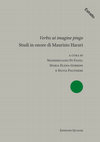
Verbis ut imagine pingo. Studi in onore di Maurizio Harari, 2024
The article examines how the Italian Fascist regime leveraged archaeology in its colonies to supp... more The article examines how the Italian Fascist regime leveraged archaeology in its colonies to support the ideological project of creating a "new man." Mussolini and Fascist propaganda promoted the image of the citizen-soldier, inspired by the ancient civis romanus, as a model of courage and unwavering dedication to the State. In this context, archaeology became a crucial tool to legitimize colonial expansion and reinforce national identity by emphasizing a historical legacy that connected the Roman imperial past to the present. The paper highlights key figures who embodied the "militant archaeologist," and explores the political significance of excavations in regions such as the Dodecanese and Libya. These archaeological efforts, more geared toward propaganda and tourism than rigorous scientific research, aimed to construct an image of continuity with ancient Rome, often neglecting other historical periods. The author offers a critical perspective on the consequences of this cultural instrumentalization, noting how Fascism influenced both academia and archaeology, leaving a complex and ambivalent legacy. Through this lens, the article sheds light on the broader impact of the totalitarian project — not only politically, but also in shaping archaeological practice and constructing a new cultural narrative.
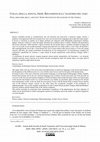
ACME – Annali della Facoltà di Studi Umanistici dell’Università degli Studi di Milano, 2023
This paper deals with one of the most transversal phenomena in numerous languages, both ancient a... more This paper deals with one of the most transversal phenomena in numerous languages, both ancient and modern: the designation of the different parts of a vase with the same lexicon used for the parts of the human body.
Focusing on four of the most commonly used modern languages in archaeological bibliography (Italian, English, French and German) and on the two classical languages par excellence (Greek and Latin), the work provides an overview of the lexicon used and the metaphors or rhetorical figures that include the figure of the vase and its parts in the ancient and modern world. In a second moment, case studies are presented, again referring to the ancient and contemporary world: on the one hand, the association of vases with the human body in archaic Greece and the case of the Etruscan canopic vessels; on the other hand, the exceptional examples of the production of anthropomorphic vases or the complete assimilation of some Central African peoples (Yungur, Mafa and Bulahay) between ceramics and the human body in the surface treatment.
This article concludes by proposing some interpretative hypotheses of the phenomenon, the basic elements of which can be found both in certain cosmogonic narratives of antiquity and in the studies of cognitive linguistics of recent decades.
E pluribus unum. Prospettive sull’Antico. Per i Decennalia dei Cantieri d’Autunno: i seminari dell’Università di Pavia dedicati al mondo antico, 2023
This work aims to investigate the evidence related to the cults practised on the acropolis of Ort... more This work aims to investigate the evidence related to the cults practised on the acropolis of Ortigia (Syracuse). An initial analysis of the structures found there and of the possible chronological phases identified by the various excavations that have taken place in the area is accompanied by the study of a class of materials – the so-called East Greek pottery – from the votive deposits associated with these cults. The aim of the article, which is part of a broader project of reconstruction of cults, identity, political choices, and international relations in Syracuse, is to propose an updated and reasoned picture of the architectural and pottery evidence found on the acropolis in a diachronic perspective.
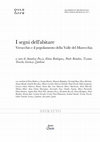
I segni dell'abitare. Verucchio e il popolamento della Valle del Marecchia, 2023
La zona di "Casa della Musica" (bartolo, Cavallo in questo volume) ha restituito solo riempimenti... more La zona di "Casa della Musica" (bartolo, Cavallo in questo volume) ha restituito solo riempimenti di fosse di scarico. Anche frammenti recuperati nei decenni passati in zona, conservati nei magazzini del museo e inediti, risultano privi di contesto. È verosimile che le abitazioni siano collocate nell'area sommitale e lungo i pendii del Monte dei Gigli, un'area di proprietà privata attualmente adibita a giardino. Lungo il margine sud-est dell'altura nel 1961 Renato Scarani effettuò delle trincee i cui risultati appaiono di difficile lettura, sia a causa dei metodi arretrati di scavo che di confusioni in sede di interpretazione (Zuffa 1963), ma che confermano a grandi linee la presenza anche in questo settore di due principali fasi di frequentazione, una di IX-VIII e una di IV sec. a.C. (cfr. anche Poli, rodrigueZ 2017, VE13). L'abitato di Pian del Monte a Verucchio 10 Soprattutto limi gialli, o giallo-arancio a seconda dei livelli, particolarmente compatti e ricchi di concrezioni calcaree (per il quadro geologico si vedano finotelli, vianello in questo volume). 11 I due fossati hanno profilo rispettivamente a V e a U, ma solo quello rivolto a ovest è in buono stato di conservazione (la parte superiore di entrambe le evidenze deve essere stata soggetta a dilavamento, sicuramente in parte asportata dall'impianto della casa di IV sec. a.C., e forse anche intaccata dagli scavi degli anni Settanta).
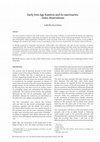
Religion and Cult in the Dodecanese, 2023
The site of Kamiros, located on the northwestern coast of the island of Rhodes, is renowned for t... more The site of Kamiros, located on the northwestern coast of the island of Rhodes, is renowned for the beauty and importance of its archaeological remains. Extensively excavated by the Italian Mission led by Giulio Jacopi between 1928 and 1933, it is still unfortunately widely unpublished. Through the review and study of the Proto-and Geometric contexts, it was possible to investigate the acropolis and Temple A areas in more detail, as they were most important for the religious history of the site.
As already proposed by d'Agostino and D'Acunto, Desborough's and Coldstream's idea that the first sanctuary of Athena originated in the 10th century BC is probably the result of a wrong understanding of the finds, which were arbitrarily collected and published by Jacopi as coming from the votive deposit. The aim of this contribution is thus to shed some new light on the excavations conducted on the acropolis and on the Temple A terrace-with the help of the results from the new study of the EIA graves-in order to understand the likely foundation period of the two sanctuaries and connect them with the birth of the Kamirian polis.
Networks as Resources for Ancient Communities, 2023
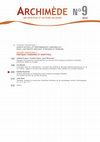
Archimède. Archéologie et histoire ancienne 9, 2022
Investigating social changes in Archaic contexts through the lens of mortuary archaeology can be ... more Investigating social changes in Archaic contexts through the lens of mortuary archaeology can be particularly effective, especially in the case of sites where only cemeteries have been explored. This is the case of Kamiros (Rhodes), which yielded little or no evidence of the Archaic city but several necropolises, chronologically ranging from the PG to the Hellenistic period. The crucial moment that I will analyse in this paper is the passage between the Geometric and the Orientalizing periods (8th to 7th cent. BC), when it is possible to observe several transformations in the composition of grave goods and in the spatial distribution of burials. If the G period was characterised by a great variety of necropolises and a strong affirmation of individual identities, the scenario changed radically in the early 7th cent. BC. The aim is to illustrate the funerary customs of an important Archaic Greek site at the moment of polis’ nucleation, in order to define the social changes, choices, and actions of specific social groups.
Imagining the Afterlife in the Ancient World, 2019

Patrimónios Alimentares de Aquém e Além-Mar, 2016
Honey, like salt, wine and oil, is one of the main foods of the ancient world: it has been, since... more Honey, like salt, wine and oil, is one of the main foods of the ancient world: it has been, since prehistoric times, the most used sweetener in the Mediterranean. In this basin, in fact, there are several areas of production, but, among these, one of the most famous is certainly the area of Mount Hymettus in Attica. Famous in antiquity, Hymettus honey is a production of excellence that is still much appreciated. Some interesting discoveries, since the 70s, allowed the archaeological validation of literary sources, highlighting places of production active from the classical to the Byzantine period. Index Fossil of these investigations are clay beehives, mainly horizontal, preserved in many sherds that are not always easy to identify. Thanks to the pioneering research of J. E. Jones and the great encyclopedic work on beekeeping of E. Crane, serious attention has been paid over the years to the findings that could suggest honey production in areas that are particularly significant such as Attica, but a work that gathers all the information available, especially those of the most recent excavations related to major projects such as the Athens metro and the construction of the new airport at Spata, near Mount Hymettus, has been lacking. This article aims to offer an overview of the honey production sites in the city of Athens and Attica, identifying the geographic areas most affected by the phenomenon and the different chronological periods. This paper aims to also investigate the ancient production technique, thanks to the comparison with other traditional areas of production and several contemporary examples from neighboring islands such as Andros and Naxos.
Dialoghi sull'Archeologia della Magna Grecia e del Mediterraneo. Atti del I Convegno Internazionale di Studi, 2017
Patrocinio Angela Pontrandolfo, Michele Scafuro (a cura di), Atti del I Convegno Internazionale d... more Patrocinio Angela Pontrandolfo, Michele Scafuro (a cura di), Atti del I Convegno Internazionale di Studi ISBN 978-88-87744-76-7 (cinque tomi indivisibili) © Copyright 2017 -Fondazione Paestum -Pandemos s.r.l. Proprietà letteraria riservata Con il supporto economico di C O PI A A U TO R E. VI ET A TA LA D IF FU SI O N E. Paestum, 7-9 settembre 2016 a cura di Angela Pontrandolfo, Michele Scafuro del I Convegno Internazionale di Studi ATTI FONDAZIONE PAESTUM
Dialoghi sull'Archeologia della Magna Grecia e del Mediterraneo. Atti del II Convegno Internazionale di Studi, 2018
Dromoi. Studi sul mondo antico offerti a Emanuele Greco dai suoi allievi della Scuola Archeologica Italiana di Atene, 2016
Tanning was of great importance in Classical Athens, but the evidence for that looks quite meager... more Tanning was of great importance in Classical Athens, but the evidence for that looks quite meager. The owners of tanneries were rich and in uential citizens (democratic leader Cleon was one of them), but their reputation was poor and they were an easy target for playwrights’ cruel pranks (as is really common in Aristophanes’ works).
Beginning with the analysis of the lex sacra IG I3 257, which bans tanners from polluting the Ilissos river upstream of a sanctuary of Herakles, this paper presents the epigraphical and archaeological evidence related to tanning activities and attempts to offer a topographical approach to the localization of leather workshops, drawing attention to some features typical of this kind of production facilities.
Conference Presentations by Isabella Bossolino
4th Vienna Anthropology Days, 2024
EAA Rome - Persisting with change, 2024
30th EAA Annual Meeting - Rome, Italy, 2024
Innovation, invention, « (r)évolution » en Méditerranée antique : Approches historiques, technologiques et sociétales, 2024
Session 1 : Méditerranée orientale et monde gréco-romain 9h-9h15 : Accueil 9h15-9h30 : Introducti... more Session 1 : Méditerranée orientale et monde gréco-romain 9h-9h15 : Accueil 9h15-9h30 : Introduction à la journée (Florence Liard, UCLouvain-SLB). 9h30-10h : Kevin Leloux (ULiège) : « Les Lydiens, inventeurs de la monnaie : son origine, les réformes de Crésus et son apport pour la compréhension de l'histoire du royaume de Lydie ». 10h-10h30 : Camilla Norcia (UCLouvain-INCAL, CEMA) : « Entre tradition mythologique et création artistique : le Centaure grec mis à l'épreuve ». 10h30-11h : Isabella Bossolino (PDR-FNRS-ULB) : « All, all are sleeping on the hill. Retracer l'évolution d'une ville antique à travers ses nécropoles. Le cas de Kamiros (Rhodes) entre l'âge du fer et l'archaïsme. »

GIS in Crete. Archaeological Questions and Computational Answers, 2024
Since the earliest studies of trade in the ancient Mediterranean, Crete has always been seen as a... more Since the earliest studies of trade in the ancient Mediterranean, Crete has always been seen as a major player in the re-establishment of the main routes, especially between the Levant and North Africa and the Aegean. This intense trading activity is clearly visible in the archaeological record of sites such as Kommos or Knossos, but some ancient evidence (e.g., Hdt. 4.151) underlines the importance that port settlements such as Itanos must have had in Archaic times. However, archaeological analyses on these topics have so far focused mainly on sites in central Crete, failing to refute the scholarly idea of a monolithic Cretan identity, austere and inward-looking.
The project Crete in a connected Mediterranean (ca 900-480 BC) (FNRS 2023-2026) aims to investigate issues of mobility and exchange in the Mediterranean world by examining the role of Crete in the construction of these exchanges from the beginning of the Iron Age to the end of the Archaic period, focusing on less studied areas of Crete, such as the eastern region. The project aims to clarify the role of this region in the construction of cultural and economic interactions on and off the island at the micro and macro levels; as well as to better define the role of coastal sites in the mobility processes of goods and people in the Mediterranean. Within the framework of this project, the construction of a freely accessible database plays a fundamental role, which will return the sites of Cretan pottery with their contextual data in the form of a GIS. In our contribution, we will explain the reasons for creating this new project and its objectives, highlighting the role of GIS and its potential for scientific research of this kind.
UNSUNG PIONEER WOMEN IN THE ARCHAEOLOGY OF GREECE, 2023
The first post-World War II Generation of female Archaeologists at the University of Warsaw: Ludw... more The first post-World War II Generation of female Archaeologists at the University of Warsaw: Ludwika Press and the gendered and non-gendered Challenges to becoming an Aegeanist within the Confines of Marxist Ideology and the Iron Curtain 15.




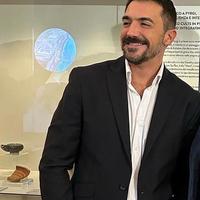
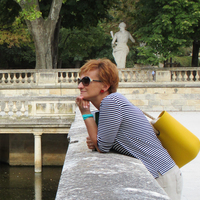



Uploads
Book Reviews by Isabella Bossolino
Papers by Isabella Bossolino
Focusing on four of the most commonly used modern languages in archaeological bibliography (Italian, English, French and German) and on the two classical languages par excellence (Greek and Latin), the work provides an overview of the lexicon used and the metaphors or rhetorical figures that include the figure of the vase and its parts in the ancient and modern world. In a second moment, case studies are presented, again referring to the ancient and contemporary world: on the one hand, the association of vases with the human body in archaic Greece and the case of the Etruscan canopic vessels; on the other hand, the exceptional examples of the production of anthropomorphic vases or the complete assimilation of some Central African peoples (Yungur, Mafa and Bulahay) between ceramics and the human body in the surface treatment.
This article concludes by proposing some interpretative hypotheses of the phenomenon, the basic elements of which can be found both in certain cosmogonic narratives of antiquity and in the studies of cognitive linguistics of recent decades.
As already proposed by d'Agostino and D'Acunto, Desborough's and Coldstream's idea that the first sanctuary of Athena originated in the 10th century BC is probably the result of a wrong understanding of the finds, which were arbitrarily collected and published by Jacopi as coming from the votive deposit. The aim of this contribution is thus to shed some new light on the excavations conducted on the acropolis and on the Temple A terrace-with the help of the results from the new study of the EIA graves-in order to understand the likely foundation period of the two sanctuaries and connect them with the birth of the Kamirian polis.
Beginning with the analysis of the lex sacra IG I3 257, which bans tanners from polluting the Ilissos river upstream of a sanctuary of Herakles, this paper presents the epigraphical and archaeological evidence related to tanning activities and attempts to offer a topographical approach to the localization of leather workshops, drawing attention to some features typical of this kind of production facilities.
Conference Presentations by Isabella Bossolino
The project Crete in a connected Mediterranean (ca 900-480 BC) (FNRS 2023-2026) aims to investigate issues of mobility and exchange in the Mediterranean world by examining the role of Crete in the construction of these exchanges from the beginning of the Iron Age to the end of the Archaic period, focusing on less studied areas of Crete, such as the eastern region. The project aims to clarify the role of this region in the construction of cultural and economic interactions on and off the island at the micro and macro levels; as well as to better define the role of coastal sites in the mobility processes of goods and people in the Mediterranean. Within the framework of this project, the construction of a freely accessible database plays a fundamental role, which will return the sites of Cretan pottery with their contextual data in the form of a GIS. In our contribution, we will explain the reasons for creating this new project and its objectives, highlighting the role of GIS and its potential for scientific research of this kind.
Focusing on four of the most commonly used modern languages in archaeological bibliography (Italian, English, French and German) and on the two classical languages par excellence (Greek and Latin), the work provides an overview of the lexicon used and the metaphors or rhetorical figures that include the figure of the vase and its parts in the ancient and modern world. In a second moment, case studies are presented, again referring to the ancient and contemporary world: on the one hand, the association of vases with the human body in archaic Greece and the case of the Etruscan canopic vessels; on the other hand, the exceptional examples of the production of anthropomorphic vases or the complete assimilation of some Central African peoples (Yungur, Mafa and Bulahay) between ceramics and the human body in the surface treatment.
This article concludes by proposing some interpretative hypotheses of the phenomenon, the basic elements of which can be found both in certain cosmogonic narratives of antiquity and in the studies of cognitive linguistics of recent decades.
As already proposed by d'Agostino and D'Acunto, Desborough's and Coldstream's idea that the first sanctuary of Athena originated in the 10th century BC is probably the result of a wrong understanding of the finds, which were arbitrarily collected and published by Jacopi as coming from the votive deposit. The aim of this contribution is thus to shed some new light on the excavations conducted on the acropolis and on the Temple A terrace-with the help of the results from the new study of the EIA graves-in order to understand the likely foundation period of the two sanctuaries and connect them with the birth of the Kamirian polis.
Beginning with the analysis of the lex sacra IG I3 257, which bans tanners from polluting the Ilissos river upstream of a sanctuary of Herakles, this paper presents the epigraphical and archaeological evidence related to tanning activities and attempts to offer a topographical approach to the localization of leather workshops, drawing attention to some features typical of this kind of production facilities.
The project Crete in a connected Mediterranean (ca 900-480 BC) (FNRS 2023-2026) aims to investigate issues of mobility and exchange in the Mediterranean world by examining the role of Crete in the construction of these exchanges from the beginning of the Iron Age to the end of the Archaic period, focusing on less studied areas of Crete, such as the eastern region. The project aims to clarify the role of this region in the construction of cultural and economic interactions on and off the island at the micro and macro levels; as well as to better define the role of coastal sites in the mobility processes of goods and people in the Mediterranean. Within the framework of this project, the construction of a freely accessible database plays a fundamental role, which will return the sites of Cretan pottery with their contextual data in the form of a GIS. In our contribution, we will explain the reasons for creating this new project and its objectives, highlighting the role of GIS and its potential for scientific research of this kind.
pastille bleue) et d'autres qui suivent plutôt le sens inverse (comme certains types de fibules ou de matières premières comme l'ambre). L'accent sera mis sur les relations entre la péninsule italienne et la mer Égée, mais pour certains cas, l'image sera étendue au-delà de cette zone : des données
récemment acquises auprès de réalités emporiques - comme Huelva - qui ont considérablement enrichi notre connaissance de la circulation des marchandises d'un bout à l'autre de la Méditerranée, seront également considérées.
En vue d'une analyse complète des matériaux, un examen contextuel des catégories d'objets et de leurs contextes de découverte (lorsqu'ils sont disponibles) sera effectué. De ce point de vue, les raisons possibles qui ont conduit à la diffusion et à la réception des matériaux dans les contextes cibles seront également proposées. L'identité, le désir d'autoreprésentation, les préférences de goût et de style, les questions économiques et de marché seront pris en compte afin d'offrir une image aussi complète que possible de ces productions et de leur rôle en tant qu'élément de contact entre une rive de la Méditerranée et l'autre.
Through the illustration and analysis of the most relevant burials, this contribution aims to shed light on the ways in which small finds were used and laid in graves, and on their possible meanings, and interpretation. In particular, I will explore the complex panorama of child burials by comparing my dataset with known evidence both in Rhodes and the greater Mediterranean (Lefkandi, but also Pithekoussai and the Phoenician coast at both ends). The final goal is to draw a picture of the beliefs of the archaic Camirian society, and to identify the presence of talismanic practices.
Il faut souligner que les nécropoles sont en fait une représentation indirecte et non directe de la société, médiatisées par l'idéologie, les croyances communes et les intérêts du groupe qui organise l'enterrement. La représentation que la société se fait habituellement d'elle-même à l'occasion du décès d'un individu est le plus souvent flatteuse et une telle représentation en dit long sur les habitudes collectives et les valeurs partagées de la société en question. Comme le mentionnait Hodder, le rituel funéraire n'est pas un reflet passif des aspects de la vie, mais il est construit de façon significative ; " in death people often become
what they have not been in life ".
Aujourd'hui, après la disparition de la vision processuelle de la mort et des rituels qui y sont liés, l'idée de la mort comme fait culturel, comme événement traumatique au sein de la communauté et comme cause
d'une crise qui n'est pas seulement idéale s'est imposée. La société doit répondre à cette crise par une série d'actions rituelles, qui expriment des condoléances pour la perte et montrent que tout ce qui était dû a été fait pour le défunt. Le rituel funéraire a donc pour fonction de remplir ces tâches, selon les modalités que la société a choisies au fil du temps, et de fixer l'image du rôle que le défunt a joué au sein de la société, non pas comme une réflexion directe mais comme un produit culturel : les relations entre le monde des vivants et le monde des morts doivent toujours être considérées à travers le filtre de l'idéologie.
Cette contribution vise à illustrer et à analyser un cas particulier, celui des sépultures d'enfants retrouvées dans les nécropoles géométriques et archaïques de Kamiros sur l'île de Rhodes. Le site, l'un des mieux conservés et des plus intéressants de la Méditerranée, a fait l'objet d'une importante campagne de fouilles par la mission archéologique italienne entre la fin des années 1920 et le début des années 1930, au cours de laquelle un grand nombre de tombes ont été mises au jour.
L'intérêt archéologique pour les sujets d'âge subadulte dans les nécropoles antiques est de formulation assez récente : l'étude de la visibilité, des modes de représentation et de la construction de l'identité des catégories infantiles a en effet été traditionnellement négligée jusqu'à ces dernières années. Cet intérêt s'inscrit dans un champ de recherche plus large qui questionne le rôle des individus non adultes dans les sociétés anciennes, suite à la compréhension de l'importance anthropologique de l'enfance en tant que concept culturel.
Le site de Kamiros semble unique pour plusieurs raisons. En effet, depuis le début de l'âge du fer, les nécropoles contrastent avec les traditions les plus répandues dans le reste de la Grèce, notamment continentale. Les enfants, à l'âge du fer, semblent pertinents pour la première fois. Leur présence dans les scènes rituelles de la poterie géométrique semble indiquer un monde social dans lequel les plus jeunes avaient leur propre place dans la vie rituelle de la communauté ainsi que le nouvel intérêt de la communauté à enregistrer ce fait.
La mort d'un enfant, un événement aussi traumatisant que la mort elle-même, devait apparaître encore plus grave aux yeux d'une société où les relations devaient être construites principalement sur les liens familiaux. L'enterrement officiel des enfants, des garants et de l'image même de la progéniture, peut signaler l'importance qui leur est attribuée, car ils sont considérés comme nécessaires à la survie de la société. On a cependant l'impression qu'à l'âge périnatal, il n'existe pas encore de système commun et partagé concernant le dépôt ou non des objets funéraires : en général, la conception semble affirmer que les enfants, bien que formellement enterrés, ne sont pas encore considérés comme des individus sociaux
complets et donc privés des objets.
Cette attention aux jeunes membres de la société se manifeste en particulier aussi dans le cas des enfants plus âgés, à partir de trois ans, qui semblent obtenir une caractérisation plus décisive et plus élaborée par le dépôt de biens funéraires, souvent riches. Il est possible d'observer dans ces cas, en effet, une nette distinction de genre, qui reprend les mêmes schémas que les sépultures d'adultes ; de même, des éléments différents apparaissent dans certaines tombes qui semblent aller dans le sens d'une grande richesse et de larges contacts méditerranéens du groupe familial auquel elles appartiennent.
Ces caractéristiques, si particulières pour l'âge du fer, sont maintenues dans une certaine mesure même pendant la période orientalisante et archaïque. Le site de Kamiros, remarquablement conservateur à plusieurs égards et clairement distinct des autres poleis de l'île, est également isolé en ce qui concerne les sépultures d'enfants qui, à l'époque archaïque, semblent encore avoir une grande importance et constituent un grand nombre des tombes fouillées par les Italiens.
Malgré les difficultés liées à l'étude des nécropoles fouillées il y a près de quatre-vingt-dix ans, le contexte des sépultures enfantines de Kamiros apparaît comme un cas exemplaire pour l'étude des processus et des choix liés aux rituels funéraires et à la déposition des plus jeunes membres de la société grecque archaïque. A travers un aperçu des contextes camiriens et une comparaison avec d'autres sites importants de la Grèce continentale et insulaire, cette intervention vise à analyser les phénomènes et les méthodes d'inhumation de sujets non adultes et les implications qu'ils ont dû avoir sur l'histoire sociale du site et, probablement, sur la formation de la polis à Kamiros.
Investigating these changes in Archaic contexts can be particularly effective, due to the lack of extensive epigraphic or historiographical material; it is even more useful in the case of sites where only cemeteries
have been explored. This is the case of Kamiros, on the northwest coast of the island of Rhodes. Kamiros, probably one of the best-preserved Hellenistic-Roman cities in the Aegean, yielded little or no evidence of the archaic city. On the contrary, a large number of burials were found in the necropolises, chronologically ranging from the PG to the Hellenistic period.
The crucial moment that I want to investigate in this talk is the one between the 8th and 7th cent. BC, and specifically the passage between the Geometric and the Orientalizing period. In this phase, it is possible to observe several transformations in the cemeteries of Kamiros: not only in the composition of grave goods but also in the spatial distribution of the burials. If the Geometric period was characterized by a great variety of necropolises and a rather strong affirmation of individual identities, starting with the early 7th cent. BC the scenario changed radically: gender indicators are no longer present; no more weapons are laid; rich burial plots are obliterated; the number of cemeteries is reduced, and their location becomes more homogeneous.
The aim of this talk is thus to illustrate and analyze the funerary customs of such an important archaic Greek site in a critical historical moment like the nucleation of the polis. The primary objective is to define contemporary social changes, in order to identify the choices and actions of a specific social group (otherwise unknown) and the message they might have conveyed.
A crucial phase of Kamiros urban development was the transition from a disrupted and nucleated urban composition to the birth and consolidation of the actual polis. In such context, the burials of the Iron Age and the Archaic period can provide us with some fundamental data. Through the illustration and analysis of the contexts related to the period between the 10th and the 6th cent. BC, this talk aims to identify methods and processes that led to the configuration and development of dominant social groups. I will discuss how the choices in the deposition of grave goods and the modes of self-representation employed by the different social actors were strongly connected to the creation of medium and long range networks, implemented both from a temporal (control over the past) and spatial (contacts and relations with other Mediterranean cultures) perspectives. As already highlighted for crucial sites of the Greek world – i.e. Lefkandi, Eretria, Cuma – this presentation will illustrate the value of the creation and exhibition of networks in funerary contexts, in order to obtain and maintain a political predominance within the archaic society of Kamiros.
🧑🏫 Topics presented fall within the wide-range of the Fellows’ research interests and address in particular the themes of their own projects. The talks are aimed at providing opportunity for debate and discussion. Attendance of young scholars and students is particularly encouraged. However, the talks are open to everyone interested.
📌 Up to 50 attendees will be admitted.
📌 To participate, attendees must register by filling up the following form: Google: https://forms.gle/iqAjFoyj49A7cX2X6
📌 The seminars can also be followed online, via Zoom.
Please email us about 24 hours before each appointments at:
📩 IASAseminars2022@gmail.com and we will send you the link to attend the lecture online.
Thank you!
👉https://www.scuoladiatene.it/images/documents/SAIA_Autumn_2022_-3dfloor.PDF
Topics presented fall within the wide-range of the Fellows’ research interests and address in particular the themes of their own projects.
The talks are aimed at providing opportunity for debate and discussion.
Attendance of young scholars and students is particularly encouraged. However, the talks are open to everyone interested.
Up to 50 attendees will be admitted.
To participate, attendees must register by filling up the following form:
Google: https://forms.gle/iqAjFoyj49A7cX2X6
The seminars can also be followed online, via Zoom.
Please email us about 24 hours before each appointments at
IASAseminars2022@gmail.com
and we will send you the link to attend the lecture online.
Thank you!
The inspiration for this volume comes from the tenth anniversary of "Cantieri d'Autunno", the annual study days developed by Prof. Marilena Gorrini and Prof. Cesare Zizza at the University of Pavia to create a space for discussion and promote scientific collaboration between scholars engaged in the study of the ancient world, albeit from different perspectives.
- damage (e.g. complete or partial obliteration caused by factors such as increasing urbanization and construction projects; limited access and possible loss of integrity due to conflicts and political instability);
- data loss (e.g. absence of thorough research owing to academic biases or a lack of stakeholder commitment; artifacts and documentation dispersal in the post-investigation phases).
Frequently, the chance of conducting new fieldwork in these contexts is hindered by a shortage of funds or inaccessibility, and the opportunity to get fresh information lies solely in the analysis of data from past research. However, scholars engaged in this recovery may face several challenges. Issues like the scarcity of up-to-date or complete documentation and the difficulty of working with data frequently not collected by modern standards add a layer of complexity to the work. Nevertheless, the result is worth the effort. The retrieval aids in gaining a better insight into the sites and often starts a virtuous cycle, fostering awareness, creating a shared narrative for community identity, and leading to collaboration among institutions and local entities to ensure preservation. For instance, digital online portals for data sharing and citizen science could be a powerful tool in changing the current situation, improving territorial monitoring and safeguarding of cultural resources.
We welcome papers that share first-hand experiences in addressing “neglected sites” with troubled histories, without specific geographic or chronological constraints. The session aims to discuss best practices for managing recovery challenges and preserving these sites for the benefit of future society.